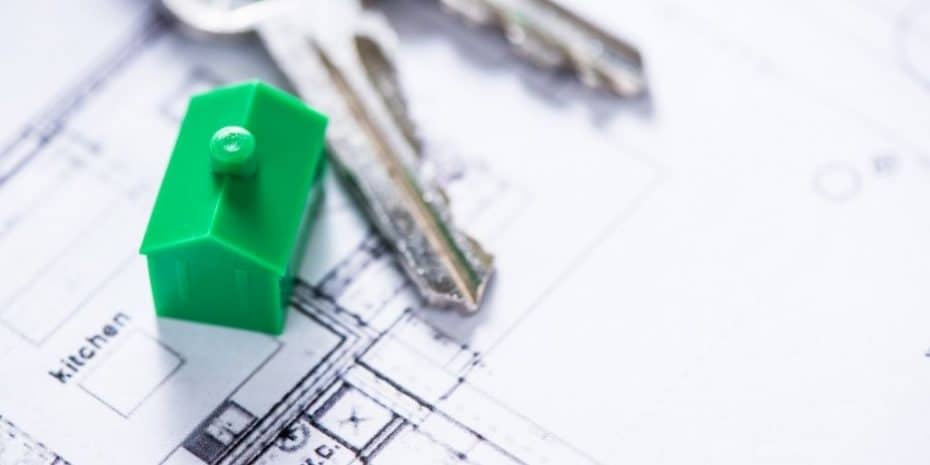What Are Holding Costs?
Shortcuts: Holding Costs
- Holding costs are the recurring monthly expenses an investor pays to own a property, including mortgage payments, taxes, insurance, utilities, and HOA fees.
- For fix-and-flip properties, accurately estimating the holding period and budgeting for associated costs is critical to determining profitability.
- Rental property investors must account for unique holding cost factors like landlord insurance, property management fees, and marketing for vacancies.
- Minimizing holding costs is important, as they directly impact a property’s cash flow and overall investment returns.
- Many holding costs, such as mortgage interest, property taxes, and repairs, can be deducted from an investor’s taxes to improve their bottom line.
What Are Holding Costs in Real Estate?

Holding costs, also known as carrying costs, refer to the ongoing expenses associated with owning an investment property. These costs can significantly impact a real estate investment’s overall returns and cash flow.
In other words, holding costs are all the recurring, out-of-pocket expenses an investor must pay while they own a property, whether it’s a fix-and-flip project or a long-term buy-and-hold investment.
The most common holding cost categories include:
- Financing payments (principal, interest, fees)
- Property taxes
- Insurance (homeowner’s, landlord, etc.)
- Utilities (electricity, gas, water, garbage collection)
- Homeowners association or condo fees
- Property management fees (for rentals)
Some real estate investors will include marketing expenses in their holding costs if the marketing expenses are paid on a recurring basis.
In addition, an investor’s specific holding costs can vary based on factors like the property type, location, age, and financing structure. For example, a luxury condominium in an urban area will likely have very different holding costs than a single-family rental home in a rural market.
Accurately projecting and budgeting for these ongoing holding costs is critical to any real estate investment analysis. Investors underestimating or overlooking holding expenses can severely impact their overall returns and cash flow. Meanwhile, those who proactively manage and minimize their holding costs stand to achieve much greater profitability.
Note that holding costs do not include expenses related to buying and selling the property, such as lender’s fees, Realtor commissions, closing costs, inspections, surveys, home warranties, and multiple listing service (MLS) fees.
Holding Costs for Fix-and-Flip Properties
Since the goal of a fix-and-flip is to buy, renovate, and sell the property as quickly as possible, the holding period is typically much shorter than that of a long-term buy-and-hold investment. This makes the holding costs for a fix-and-flip different (and sometimes lower) from those of a typical buy-and-hold investment.
The most common holding costs for fix-and-flip projects include:
- Loan payments: Whether the investor uses a short-term hard money loan or a more traditional mortgage, the monthly debt service is a significant ongoing expense. These loan payments can quickly eat into potential profits if the property takes longer than expected to renovate and sell.
- Property taxes: Every property requires taxes to be paid to the local municipality, even if the property is vacant during the rehab process. Investors can research tax records with the county assessor’s office to estimate these costs or use data services like DataTree or AgentPro247.
- Insurance: Most lenders require property insurance, whether the property is vacant or occupied. The insurance company usually prorates the premium if the property is sold within a year.
- Utilities: Keeping the lights on, water running, and trash picked up are often necessary, especially if contractors need access during the renovation. These utility bills can add up quickly, particularly for older, less energy-efficient properties. You can minimize the impact on your cash flow by implementing eco-friendly upgrades to your properties, as we’ve covered in our guide about energy-efficient remodeling ideas.
- HOA or condo fees: If the fix-and-flip property is part of a homeowners association or condominium complex, the associated monthly or quarterly fees must continue to be paid.
- Marketing costs: Some investors account for marketing in their operating expenses; others factor them in as holding costs. Marketing costs include digital advertising, signs and flyers, and open house expenses, among others.
RELATED: Hard Money 101: Everything You Need To Know About Getting Started With Hard Money Loans
Accurately estimating the length of the holding period is crucial when budgeting for a fix-and-flip project. A good rule of thumb is to plan for a 6-month holding period, which allows time for the renovation work, listing the property, and completing the sale. Of course, this timeline can vary substantially based on the project scope, contractor availability, market conditions, and other factors.
Holding Costs for Buy-and-Hold Properties
While the holding cost considerations are largely the same for fix-and-flip and buy-and-hold investment properties, long-term rental investors must be aware of a few key distinctions.
In addition to the standard expenses like loan payments, taxes, insurance, utilities, and HOA fees, buy-and-hold investors may also need to account for:
- Rental insurance: Most landlords and owners of buy-and-hold investment properties will need to buy a specialized rental property insurance policy, which provides coverage for hazards, liability, and potential tenant-caused damage. A supplemental umbrella policy may also be a good idea if the investor’s personal net worth exceeds the liability limits on the policy. These policies typically cost about 25% more than a standard homeowner’s insurance plan.
- Property management fees: If the investor hires a third-party property management company to handle tasks like tenant screening, rent collection, maintenance, and repairs, the monthly management fees become part of the holding cost structure. Management fees typically range from 8% to 12% of the collected rent.
- Marketing and advertising: For investors with vacation rentals or other short-term rental properties like Airbnb, there may be ongoing costs associated with marketing the listing, promoting the property, and managing the booking process. However, these marketing expenses are usually minimal for long-term rentals with a stable tenant base.
When projecting the long-term holding costs for a buy-and-hold investment, investors should factor in not just the initial year’s expenses but also how those costs may change or escalate over the anticipated holding period. Property taxes, insurance premiums, utility rates, and other variable costs tend to increase over time, so investors should build in appropriate growth assumptions.
Additionally, periods of vacancy between tenants can significantly impact a rental property’s net operating income and effective per-month holding costs. Carefully analyzing historical vacancy rates and budgeting for potential downtime is crucial for accurate investment projections.
How to Calculate Holding Costs for an Investment Property
The calculations are straightforward for buy-and-hold investment properties; the investor can simply add up all the recurring monthly expenses and multiply them by 12 months to find their annual holding costs.
For fix-and-flip properties, an investor needs to estimate the length of time they will hold the property for renovation and improvements, plus an extra period to sell and close on the home. Six months is usually a good rule-of-thumb estimate and allows for time to show and sell the property.
For example, if the monthly holding costs on a fix-and-flip are $2,000, the selling price needs to cover all purchase, rehab, and selling costs, plus about $12,000 in holding costs to break even if the project takes six months from purchase to sale.
Impact of Holding Costs on Investment Returns
Holding costs are a huge factor in determining whether a real estate investment is profitable.
Higher holding costs can dramatically reduce a property’s cash flow and net operating income, lowering the investor’s potential returns. Conversely, finding ways to minimize or at least optimize existing carrying costs can boost an investment’s profitability.
Let’s look at a simple example to illustrate the impact:
Imagine an investor is analyzing a rental property with a $1,500 monthly rent. If the total monthly holding costs (mortgage, taxes, insurance, etc.) add up to $1,200, the property’s net cash flow would be $300 per month.
However, if that same property had $1,800 in monthly holding costs, the net cash flow would be only $100 per month—a 66% reduction. Over a year, that $700 difference in monthly cash flow equates to $8,400 in lost potential returns.
This example highlights why real estate investors should set target thresholds for their maximum acceptable holding costs. Most experts recommend keeping total holding costs below 50% of the property’s gross rental income as a general guideline. This leaves enough room for the investment to generate sufficient cash flow and meet the investor’s return objectives.
Of course, the optimal percentage can vary depending on the investor’s specific goals, risk tolerance, and investment strategy. Fix-and-flip projects, for instance, may have a higher acceptable holding cost ratio since the goal is to sell the property as quickly as possible.
FAQs on Holding Costs
Can holding costs be deducted from taxes?
Yes, many holding costs associated with investment properties can be deducted from an investor’s taxes.
According to the IRS, rental property owners are eligible for deductions for mortgage interest, property taxes, insurance premiums, utilities, repairs, and property management fees. These deductions can help offset the impact of holding costs and improve the overall profitability of a real estate investment. Investors should carefully track and document all eligible expenses to maximize their tax deductions each year.
How do holding costs vary between property types?
The specific holding costs an investor faces can vary significantly based on the type of property.
For example, single-family rental homes typically have lower property taxes, insurance, and utility costs compared to multifamily or commercial properties. Condominiums and townhomes often have higher HOA fees to cover common area maintenance. Luxury vacation rentals may have increased marketing and advertising expenses. Before snapping up an attractive property, analyze its unique holding cost profile to ensure it aligns with your investment goals and risk tolerance.
What role do interest rates play in holding costs?
The prevailing interest rate environment can have a major impact on a real estate investor’s holding costs, especially for properties with mortgage financing.
To wit: when interest rates are low, an investor’s monthly debt service payments will be lower, reducing their overall holding costs. On the other hand, rising interest rates can significantly increase the carrying costs of a property, potentially eroding potential profits.
This is a critical consideration when underwriting an investment, as higher rates can negatively affect both the property’s cash flow and the investor’s ability to obtain favorable financing. Monitoring interest rate trends and their impact on holding costs is essential for maximizing investment returns.







